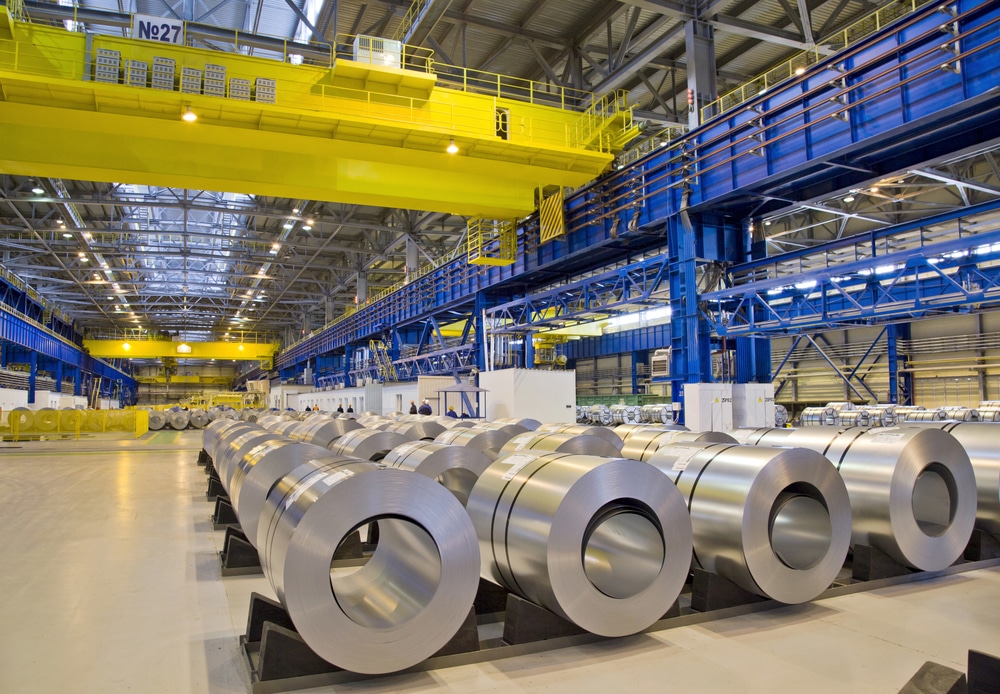Steel Coil Basics & How to Buy
July 19, 2023 | Categorized in: Types

Steel coils are vital in numerous industries, serving as an important piece of construction, manufacturing, and infrastructure development. Whether you’re new to an industry or simply seeking to enhance your knowledge, this article will serve as a practical guide, providing essential information on what steel coils are, their applications, the processing involved, and more.
What are steel coils?
Unlike steel sheets which remain flat, steel coils are continuous sheets of steel that are wound into a roll-like cylindrical shape. The manufacturing process for steel coils involves two primary methods: hot rolling and cold rolling. Hot rolled coils are produced by heating the steel above its recrystallization temperature, resulting in a rougher surface and a larger range of dimensional sizes. On the other hand, cold rolled coils are processed at room temperature, providing a smoother surface finish and more precise dimensional tolerances.
What are they used for?
Steel coils have a wide range of applications across various industries due to their strength, versatility, and formability. They are often used for common applications such as:
- Manufacturing of automotive components like frames, chassis, and body parts
- Construction materials, including roofing, wall cladding, structural beams, and pipes
- Production of appliances such as refrigerators, ovens, and washing machines
- Fabrication of storage tanks, containers, and shipping vessels
- Production of consumer goods like furniture, shelving, and hardware
How is coil steel processed?
Coil steel processing is a multi-step operation. After the initial rolling process, the coil can be cut into narrow strips, known as coil slitting, to meet different application requirements. The coil then undergoes various finishing services, such as galvanizing, which coats the steel in a protective layer of zinc to prevent corrosion. Other finishes, like paint or plastic coating, can also be applied to enhance the coil’s appearance or performance.
How are the coils transported?
Given their significant weight and size, steel coils require special attention during transportation. They are generally moved using cranes and forklifts within the factory or warehouse it’s manufactured in. For longer distances, they may be loaded onto a steel coil flatbed truck, train, or even ship. Due to their cylindrical shape, appropriate restraints are necessary to tie down and prevent the coils from rolling during transportation.
Steel coil measurements
The size of a steel coil is typically expressed through three main measurements; width, thickness, and length.
- Width – refers to the measurement from one edge to the other across its flattened surface. This is a vital measurement, as it determines the maximum distance between the edges of the sheet (or if the coil needs to be slit).
- Thickness – indicates the depth of each “layer” of the steel coil, or the thickness of the sheet once unrolled. Can be measured in gauges or inches.
- Length – the full length of the steel coil when completely unrolled. This is important to determine how many coils a project may need, or as an indicator of a coil’s weight.
Other measurements you might see include:
- Outside Diameter (OD) – refers to the measurement across the outer edges of the coil. It plays a crucial role in determining how the coil fits within specific machinery or storage facilities and affects transportation logistics due to its size and weight.
- Inside Diameter (ID) – indicates the measurement across the inner core of the coil. This measurement is important for compatibility with machinery and equipment that require a specific inner diameter for efficient operation. Additionally, it influences the stability and handling of the coil during transportation and storage.
Steel coil weight
The weight of a steel coil is a critical factor to consider when purchasing. It affects not only the cost but also the transportation requirements. The weight is typically measured in pounds per square foot of steel or total tons and can be calculated by multiplying the coil’s length, width, and thickness and then multiplying by the density of the steel grade you’re choosing. It’s important to remember that each steel coil is unique, and its measurements and weight can vary based on its intended application and the processing techniques used. This is why understanding these basics is critical when purchasing steel coils.
Get full or slit steel coils today
Steel coils provide the raw material needed for a wide array of products and infrastructure projects. Understanding the basics of steel coils, including their applications, how they’re processed, and their sizing system, can help empower buyers to make informed decisions while procuring these essential materials.
If you’re ready to buy full or slit steel coils for your next project, turn to the experts at Service Steel Warehouse. With our extensive knowledge and large inventory, we not only understand the importance of quality, reliability, and timely delivery, but also have the products you need to get the job done.
Call our team for immediate service or request a quote today!

